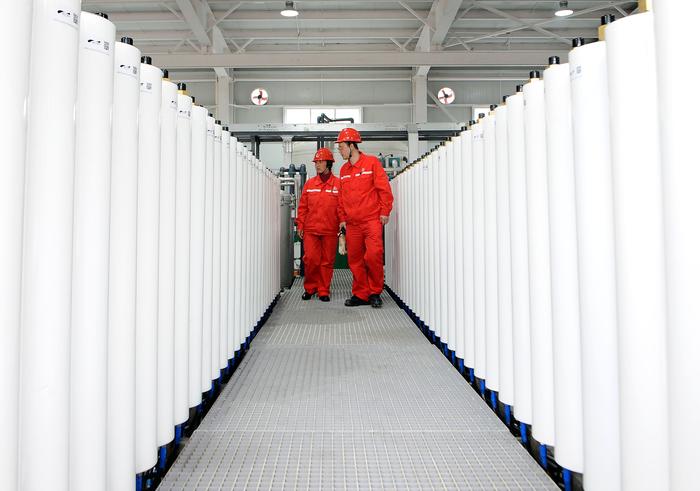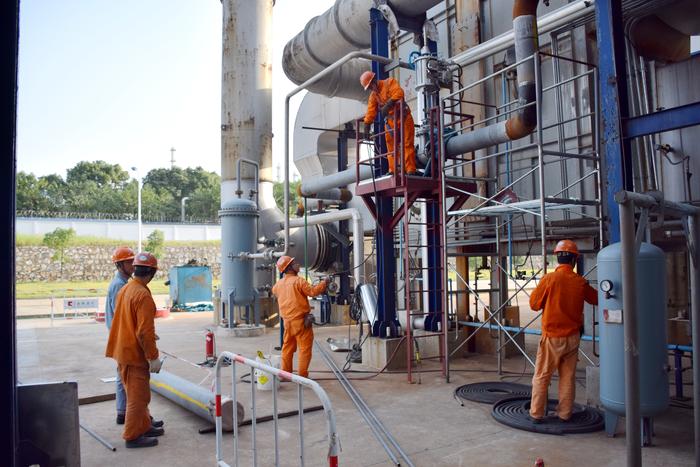|
| 2020-10-26 来源: 中国石化新闻网 |
| 石化新闻 |
中国石化新闻网讯 据今日油价10月21日报道,皮博迪(Peabody)能源公司前首席执行官博伊斯(Gregory Boyce) 曾表示:“可再生能源取代传统燃料是不现实的。” 每当石油和天然气巨头宣布大举进军可再生能源领域时,持怀疑态度的人都会不假思索地大肆抨击这些公司仅仅是为了向人们展示绿色环保的企业形象。 值得一提的是,过去10年,石油巨头实际上已经在清洁能源领域投资了数十亿美元,并已制定了在2020年再投资数十亿美元的计划。而造成这些批评挥之不去的原因是,大型石油公司追求净零排放的承诺前言不搭后语,三心二意。如2018年,大型石油公司在绿色能源项目上的花费还不到总预算的1%。 一项对大型石油和天然气公司近期在可再生能源支出计划方面的分析显示,即便世界进入了可再生能源时代,可再生能源的实际投资与新油田化石燃料项目的资本支出计划相比仍将相形见绌。挪威能源咨询公司Rystad energy表示,石油巨头将在未来5年内向新的油气项目投入1660亿美元,这与目前专门用于太阳能和风能项目的180亿美元(不到资本支出的10%)相差巨大。事实上,石油巨头减少温室气体(GHG)排放的大部分计划都依赖于所谓的天然气 “过渡桥梁”,而不是对可再生能源的真正投资。 在投资可再生能源方面,荷兰皇家壳牌公司可能比其他任何大型企业做得都多。最近,壳牌首席执行官Ben van Beurden表示,公司不再认为自己是一家石油和天然气公司,而是一家能源转型公司。壳牌一直在大力宣传向可再生能源的转变,经常高调呼吁该行业转向更清洁的能源。2016年,壳牌制定了一个远大的目标,即到2020年在清洁能源项目上投资40亿至60亿美元,不过《卫报》最近报道称,该公司不太可能实现这一目标。 那么,在新冠肺炎疫情已经赋予了可再生能源决定性优势的时候,为什么大型石油公司仍在拖后腿呢?因为对石油巨头来说,成功转型为绿色能源公司并不容易,他们需要同时发展传统能源和可再生能源业务。 之所以如此,是因为大多数企业已经在与日益减少的现金流作斗争,这意味着他们无法用所剩无几的现金进行赌博。自2014年以来,油价一直在下跌,而这种情况在疫情期间进一步恶化。 石油和天然气公司仍在努力寻找目前使用日益减少的现金流的最佳方式。实际上,他们仍在权衡是否值得将部分业务向可再生能源转型,同时还需确定哪些低碳能源市场能提供最具吸引力的未来回报。 多数可再生能源项目,如太阳能和风能项目,往往会在最初的资本支出后,在价格风险普遍较低的情况下,需要数十年才会见成效,而石油是目前回报较快的发展项目,但油价风险较高。为了迅速获得股东回报,一些化石燃料公司实际上一直在缩减其清洁能源投资。 能源公司还面临着另一个难题,即清洁能源投资的回报率不断下降。今年8月发表在Science Direct上的一篇论文指出,风能和太阳能成本的大幅下降导致收入下降速度快于成本削减速度,从而导致利润下降。风能项目尤其如此,由于风能收益的下降速度快于成本的降低速度,后期的风能开发通常比早期开发的市场价值更低。不过,太阳能更具弹性,因为技术进步大致抵消了收入下降的影响,这或许可以解释为什么太阳能股会飙升。 增加风能和太阳能往往会降低高峰发电时期的电价,事实上,在阳光充足的时间里,加州的电价可以降至零。这在早期的部署中并不是问题,但随着可再生能源在发电组合中发挥越来越大的作用,就渐渐成为了一个主要问题。 然而,上述这些争论在以前可以成为石油巨头削减可再生能源资金投入的借口,但在现在已经不是理由了。2010年皮博迪能源公司对可再生能源不屑一顾,该公司首席执行官认为煤炭是美国能源的未来,但当前市场情况已经发生了很大变化。 那时,风能和太阳能只占美国能源结构的1%,而随着技术进步和成本大幅降低,目前可再生能源占美国一次能源需求的11%,占发电产能的17.5%,这一比例已经增长了四倍。 去年4月,可再生能源为美国电网提供的电力首次超过煤炭,这是可再生能源发展历程中的一个重要里程碑。这是迄今为止表明太阳能和风能已经足够成熟的最明显的迹象。实际上,可再生能源已经可以与化石燃料并驾齐驱,已经成为全世界三分之二的地区最便宜的能源形式。 根据彭博社的预测,到2050年,太阳能和风能可能会为全球一半的人口提供电力,届时煤炭和核能可能会在美国消失,会被更便宜的可再生能源和天然气挤出市场。 关于风能和太阳能投资收益递减的问题,Science Direct的这篇论文补充称,即使可再生能源项目部署量大幅增长,碳减排成本仍然相对较低。碳减排成本被定义为将二氧化碳排放量减少一公吨的净成本。在风电装机容量达到417亿瓦(相当于美国目前风电装机容量的4倍)之后,减排成本仅为每吨50美元,而太阳能装机容量达到530亿瓦时,减排成本为每吨40美元。 其次,有几个重要的趋势在减缓收入的下降,即充足的存储空间、需求响应和互联互通。开发充足的存储空间使公用事业公司能够节约产能,在价格较低时生产的可再生能源可以在价格较高时出售。需求响应可以将消费者将需求从价格高企时转移到可再生能源发电较多的时候。而互联互通使可再生能源能够被运送到需求和价格较高的遥远市场。 鉴于今年全球石油和天然气行业的价值已经缩水了一半,大型石油公司应该要开始兑现承诺。 王佳晶 摘译自 今日油价 原文如下: The Big Oil Side Hustle: Where 'Renewable' Money Is Really Going "It is unrealistic to suggest that renewables could replace conventional baseload fuels."--Gregory Boyce, former CEO Peabody Energy Corp., 2010. Every time an oil and gas major announces a major foray into renewable energy, the skeptics come out like clockwork and lambast the sector for merely trying to burnish its green credentials. Sometimes the criticism appears undeserved because the Oil Majors have actually invested billions of dollars into the clean energy sector over the past decade and have lined up plans to invest billions more in the 2020s. But here's why the criticism sticks anyway: The most ambitious pledges by Big Oil to pursue net-zero agendas have remained inconsistent or half-hearted at best. Let this sink in: In 2018, Big Oil spent less than 1% of its combined budget on green energy projects. An analysis of near-term spending plans on renewables by the biggest oil and gas companies reveals that real investments in renewable energy will continue to pale in comparison to capex plans for greenfield fossil fuel projects even as the world ushers in the age of renewables. For instance, Norway-based energy consultancy Rystad Energy says the Oil Majors will pump in $166B into new oil and gas ventures over the next five years, thus dwarfing the currently-specified outlay of just $18B (less than 10% of capex) for solar and wind energy projects. Indeed, much of Big Oil's reduction in greenhouse gas (GHG) emissions leans on the so-called natural gas bridge and not real investments in renewable energy. Royal Dutch Shell (NYSE:RDS.A) has probably done more than any other supermajor as far as investing in renewable energy goes. Recently, Shell CEO Ben van Beurden told investors that the company no longer considers itself an oil and gas company but an energy transition company. Shell has been vocal about the shift to renewables, frequently issuing the clarion call for the industry to switch to cleaner energy sources. In 2016, Shell set an ambitious goal to invest $4bn to $6bn in clean energy projects by 2020, though the Guardian recently reported that it was unlikely to meet that target. So, why is Big Oil still dragging its feet at a time when Covid-19 has granted renewable energy a decisive upper hand? For the oil majors, successfully transitioning to green energy companies is not going to be a walk in the park because these companies have to ride two horses. That's the case because the majority are already battling dwindling cash flows, which means they cannot afford to gamble with whatever little is left. Oil prices have been on a downtrend since 2014, a situation that has only worsened during the pandemic. Oil and gas firms are still grappling with the best way to presently use dwindling cash flows; in effect, they are still weighing whether it's worthwhile to at least partially reinvent themselves as renewables businesses while also determining which low-carbon energy markets offer the most attractive future returns. Most renewable ventures, like solar and wind projects, tend to churn out cash flows akin to annuities for several decades after initial up-front capital expenditure with generally low price risk as opposed to their current models with faster payback but high oil price risk. With the need to generate quick shareholder returns, some fossil fuel companies have actually been scaling back their clean energy investments. Energy companies are also faced with another conundrum: Diminishing returns from their clean energy investments. A paper published in Science Direct in August says that dramatic reductions in the cost of wind and solar have been leading to an even bigger reduction in revenue inflows leading to falling profits. This is particularly true for wind energy as later deployments of wind usually have lower market value than earlier ones due to wind energy revenue declining more rapidly than cost reductions. Solar is more resilient, with technological progress approximately balancing out the revenue degradation, which perhaps explains why solar stocks have gone ballistic. Adding wind and solar to our grid tends to reduce electricity prices during peak generation times: Indeed, electricity prices in California can come down to zero during long sunny durations. This was not a problem for early deployments but is becoming a major concern as renewables increasingly play a bigger part in our electricity generation mix. No more excuses Those arguments, however, might have cut it as recently as a year or two ago but can no longer pass muster. First off, a lot has changed since former Peabody Energy Corp.(NYSE:BTU) dismissed renewables in 2010 and told members of Congress that coal was the future of America's energy. Back then, wind and solar comprised just 1% of the U.S. energy mix: That proportion has risen four-fold with renewable energy sources now supplying 11% of the U.S. primary energy needs and 17.5% of its electricity generation mix thanks to technological advancements as well as dramatic cost reductions. Indeed, last April marked an important milestone in the renewable odyssey after renewable energy supplied more power to America's grid than coal for the first time ever. This is the clearest sign yet that solar and wind have matured enough and can actually go head-to-head with fossil fuels, having in fact become the cheapest form of power in two-thirds of the world. In fact, solar and wind are likely to power half the globe by 2050as per BloombergNEF forecasts by which time coal and nuclear are likely to have all but disappeared in the U.S. mainly forced out by much cheaper renewables and natural gas. Regarding the diminishing returns of wind and solar investments, the Science Direct paper adds that both sectors should be fine because carbon abatement costs remain relatively low even after huge growth in deployments. Carbon abatement or mitigation costs are defined as the net cost of reducing CO2 emissions by a metric ton. After 417 gigawatts of wind deployment--or more than 4x the current level of U.S. wind deployments--the abatement cost is just $50 per ton of carbon while abatement costs for solar clock in at ~$40 per ton at 530 GW. Second, there are several important trends that have been working in tandem to slow down the revenue decline: Storage, demand response, and increasing interconnection. Developing ample storage allows utilities to save energy excess renewable energy produced when prices are low to be sold when prices are higher. Demand response can shift consumer demand from periods of high prices to times when renewables are generating more power. Interconnection enables renewable energy to be transported to distant markets where demand and prices are higher. With the value of the global oil and gas sector already cut in half this year, Big Oil should simply eschew the usual quarterly capitalism and finally start putting its money where its mouth is.? ———————————————————————————— 壳牌在宾夕法尼亚州乙烷裂解装置完成70% 中国石化新闻网讯 据ICIS-MRC网站10月21日莫斯科报道,荷兰皇家壳牌公司在新闻稿中称,其在宾夕法尼亚州西部耗资数十亿美元的石化综合设施已完成约70%,并将在本世纪20年代初投入使用。 壳牌聚合物副总裁希拉里·默瑟(Hilary Mercer)在Shale Insight2020会议上通过在线演讲披露了这一消息。 该工厂目前正在建设中,位于匹兹堡西北约48公里的比弗县,其天然气发电厂和水处理设施将自给自足。 该工厂的成本估计在60亿-100亿美元,该厂将乙烷转化为塑料原料。每年可生产150万吨的乙烯和160万吨聚乙烯(PE),这两种都是塑料的重要成分。 正如MRC早些时候报道的那样,今年3月,由于新冠病毒的爆发,壳牌化学公司暂停了其正在宾夕法尼亚州Monaca的大型塑料和石化基地的建设。 郝芬 译自 ICIS-MRC 原文如下: Shell completes construction of ethane cracker in Pennsylvania by 70% Royal Dutch Shell plc. said that its petrochemical complex of several billion dollars in Western Pennsylvania is about 70% complete and in the process to enter service in the early 2020s, as per the company's press release. The news was disclosed by Hilary Mercer, vice president of Shell Polymers via an online presentation at Shale Insight 2020 conference. Currently under construction, the plant is in Beaver County, about 48 km northwest of Pittsburgh, and will be self-sustained with its natural gas power plant and water treatment facility. The plant’s costs are estimated to be USD6-USD10 billion, where ethane will be transformed into plastic feedstock. The facility is equipped to produce 1.5 million metric tons per year (mmty) of ethylene and 1.6 mmty of polyethylene (PE), two important constituents of plastics. As MRC reported earlier, the COVID-19 outbreak led Shell Chemical to temporarily suspend construction on the massive plastics and petrochemicals site it's building in Monaca, Pa, in March, 2020. |








